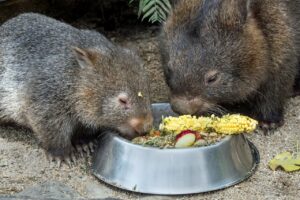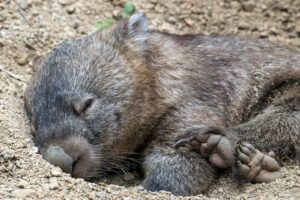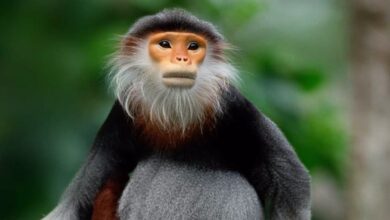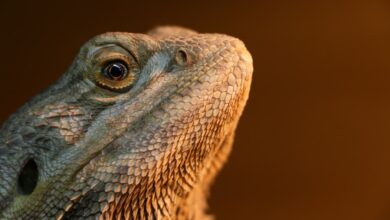Facts You May Not Know About The Wombat
The wombat is a species of marsupial that is exclusive to Australia. It is the only herbivorous mammal that burrows and is also one of the largest burrowing animals. There are three different kinds of wombats, but only two of them, the northern and southern hairy-nosed wombats, are considered endangered.
Wombats have huge, stocky bodies with short legs, can grow up to three feet in length, weigh between 40 and 90 pounds, and are between 40 and 90 centimeters tall. Wombats may appear to move slowly, yet they are capable of reaching speeds of up to 25 miles per hour during brief bursts of speed.
Even though they are skilled at avoiding attention and living in burrows at night, these nocturnal animals deserve the recognition that is accorded to other well-known species of Australian nature. The wombat is an animal about which you may not be aware of these few facts.
Three Wombats Exist
The common wombat, the northern hairy-nosed wombat, and the southern hairy-nosed wombat are the three species of wombat that may be found in Australia. Wombats are endemic to Australia. Wombats may be found living in a variety of environments, including forests, alpine slopes, dry grasslands, and coastal shrub regions.
The northern hairy-nosed wombat is the species that are most at risk of becoming extinct, and it is only found in Epping Forest National Park in Central Queensland. The common wombat, also known as the bare-nosed wombat, may be found in the eastern parts of New South Wales and Queensland, as well as in South Australia, Flinders Island, and Tasmania.
There are just a few isolated locations in Western Australia, southern South Australia, and the southwestern part of New South Wales, where you may find the southern hairy-nosed wombat.
The faces of the three individuals most clearly differentiate one another from one another. The common wombat has no hair on its nose, but the hairy-nosed wombat and the other wombat have some hair in their nostrils. The ears of the common wombat are also smaller and have more furr than those of the other wombats.
They’re Known To Bite
When it comes to the mating rituals of wombats, not a lot of information is known. One thing that researchers have found out is that when it is time to mate, they bite the rump of the member of the opposing sex.
This behavior is shown by male common wombats, and it consists of the male following the female around in circles until she slows down enough for the male to take a bite off of her rear.
When a female is at her most fertile, they have a tendency to bite the bottom of a male wombat, according to the findings of research conducted in Queensland on southern hairy-nosed wombats.
Scientists are encouraged by this discovery, and they expect that it will boost attempts to breed captive populations of southern hairy-nosed wombats and critically endangered northern hairy-nosed wombats in order to safeguard the survival of both species.
Their Pouch Openings Are Toward the Rear
Wombats are unique among marsupials in that their pouches face the opposite direction of those of other marsupials, which open at the top towards the mother’s head.
These burrowing creatures have developed a clever adaption that serves them well: the pouch now faces in the other direction, preventing dirt and branches from entering it and potentially injuring the young.
Wombat joeys, also known as baby wombats, are born after a gestation period of around one month. They emerge from their mother’s birth canal around the size of a jellybean and crawl into her pouch, where they continue to develop and grow for the next six to ten months.
Wombat Poop Is Cube-Shaped
The average number of droppings produced by a wombat in a single night might range anywhere from 80 to 100. Because of how long it takes them to digest their food, their stool is always in an oddly shaped cube.
It takes wombats anywhere from 14 to 18 days to absorb the full amount of nutrients from the food they eat, which is also the reason for the dryness of their excrement.
The walls of their intestines expand unevenly as the feces go through the digestive tract, which results in the feces taking on a cube-like form.
Wombats will utilize their feces to mark their area, which includes the openings to their burrows.
They Live in Their Burrows Throughout the Day
Wombats are predominantly nocturnal and crepuscular animals. They remain in their burrows for most of the daylight hours and are only seen in the surrounding area for a maximum of six to eight hours each evening. 
They readjust their routines according to the changing of the seasons, staying inside during the hottest part of the day during the summer and going out in the afternoon during the winter months when it is not as cold. Wombats have been observed basking in the sunlight outside of their burrows on occasion, even during the winter months.
Wombats Are Experts When It Comes To Tunneling
Wombats are skilled at constructing elaborate burrows for themselves. Their small limbs and keen claws are the right instruments for the task, and they also have the added bonus of having extremely sharp front teeth, which allow them to cut through anything that stands in their path.
Wombats are known for their complex warrens of burrows, which consist of a number of different tunnels and a number of different entrances.
They create a tiny opening at each entry point of the tunnel by using their forepaws to dig a hole, and then they depart the burrow in the opposite direction of how they entered it. This keeps extra soil from amassing at the opening.
Wombats are solitary creatures, and the openings to their burrows are often just big enough for one person to fit through. When wombats aren’t there, other creatures that are looking for shelter underground may exploit the complex network of tunnels that wombats have created.
They Possess Teeth Similar to Rodents
Wombats, like rodents, have incisor teeth that have open roots and continue to develop throughout their whole lives. Wombats are the only marsupials known to have ever-growing teeth, which is thought to be an adaptation to the harsh foliage that makes up the majority of their diet.
There is no stopping the growth of any of a wombat’s teeth, even the molars. As they feed and dig tunnels, wombats maintain a healthy set of teeth by gnawing on local grasses, bark, and roots. Wombats also devour a lot of food.
They are at Risk
There are three different kinds of wombats, and two of them, the northern hairy-nosed wombat and the southern hairy-nosed wombat, are in danger of extinction.
The northern hairy-nosed wombat is considered to be in a state of critical endangerment since it can only be found in a 1,200-acre section of Epping Forest National Park in Queensland.
There are just about 80 people in the adult population, according to estimates. Because of the spread of non-native exotic grasses throughout the range of the northern hairy-nosed wombat, the habitat quality of this species of wombat is deteriorating.
The recovery and management strategies to eliminate predator threats, maintain habitat, build locations to translocate the animals, and develop captive breeding procedures utilizing southern hairy-nosed wombats are either in place or in the planning stages at this time.
The southern hairy-nosed wombat is on the verge of extinction as its population continues to decline.
There are now 6 subpopulations of southern hairy-nosed wombats, all of which are separated from one another geographically, and the overall amount of their habitat has shrunk.
The wombat is a marsupial that may be found in high numbers in some regions. These wombat populations often come into conflict with farming communities and compete for food with rabbits and cattle.
Wombats Defend Themselves Using Their Buttocks
The manner in which wombats defend themselves when they feel threatened is one of the most entertaining aspects of our research.
The majority of their rear ends are composed of cartilage, a substance that is similar to bone but has a significantly reduced number of nerve endings.
So, in the event that they are assaulted outside of the safety of their underground homes, they will immediately dive headfirst into their burrows for protection.
This guarantees that their rear ends will block the entrance, warding off any potential predators and safeguarding any baby wombats that may be hiding within. Even if they are attacked from behind, they won’t sustain significant injuries.
The Wombat’s Teeth Are Constantly Evolving
Wombat teeth are not like human teeth, which can only develop to a specific size and form before they cease growing. Wombat teeth continue to grow beyond this point. If we lose our teeth after a certain age, new ones will not come in, even if we replace them.
In contrast, the teeth of these species are very pointed and continually undergoing growth. Wombats have to regularly chew on difficult items like rough bark and other types of tough vegetation in order to maintain their teeth in good shape.
If they don’t do this, their teeth will grow to be too large for them to manage, which will make life a lot more challenging for them.
Wombats Are Not Quite as Defenseless as They May Appear at First Glance
It’s easy to overlook wombats due to their adorable appearance and their little size. The majority of people are under the impression that their best line of defense is to flee and take cover underground.
Because of this, one of the wombat facts that not many people are aware of is the fact that animals are responsible for the injuries of numerous humans each year. Scratches from their sharp claws and significant bites, either of which can result in an infection, are among the injuries that can be encountered.
It has also been reported that humans have been pushed down by wombats when the wombats feel threatened since the people are unaware of how powerful wombats can be.
Wombats’ Very Sluggish Metabolisms
Wombats call environments that are hot and dry homes, and although their burrows offer some protection from the elements, they can only do so much. Because of this, one of the fascinating aspects about wombats is how they maintain their body temperature.
They have a metabolism that is among the slowest in the whole wide globe. On average, it might take a wombat adult up to 14 days to completely digest the food it has consumed.
This prevents the wombat’s metabolism from working too hard, which would cause its body temperature to rise to dangerous levels. Also, it clarifies why wombats move so slowly, with the exception of when they feel threatened.




